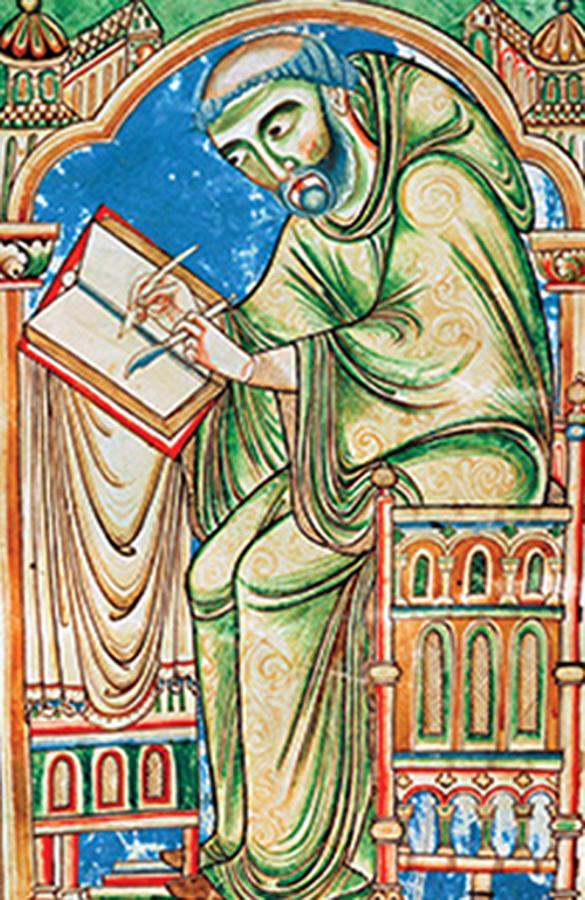C15th Illuminated Medieval French Book of Hours Manuscript Leaf. From Around The Time of The Battle of Agincourt or Later
A vellum manuscript leaf from a French Book of Hours, illuminated in gold leaf, blue and red ink; recto and verso each with 16 lines of Latin text in blackletter script.
A simply beautiful 15th century vellum leaf from a 'Book of Hours' written in Paris, with a block of text lines to each side in batarde script with use of gold leaf; coloured filler blocks with white detailing, gold leaf . Fine condition.
Books of hours were the most popular books for laypeople in the late Middle Ages and Renaissance. They contained sets of prayers to be performed throughout the hours of the day and night. These books were often designed to be visually appealing, and wealthy patrons commissioned leading artists to work on them. The manuscript also contained illustrations of hell which acted as reminders that behaviour on Earth would determine the destination of their soul. Scenes within some manuscripts of this type may show people being captured, tortured and eaten by monsters and demons. Many were illuminated with miniatures, decorated initials and floral borders. Paper was rare and most Books of Hours were composed of sheets of parchment made from skins of animals, usually sheep or goats the finest were called vellum. By the 14th century, the cloisters of monks writing in the scriptorium had almost fully given way to urban scriptoria, especially in Paris, Rome and the Netherlands. While the process of creating an illuminated manuscript did not change, the move from monasteries to alternative settings was a radical step. Demand for manuscripts grew to an extent that Monastic libraries began to employ secular scribes and illuminators. These individuals often lived close to the monastery and, in instances, dressed as monks whenever they entered the monastery, but were allowed to leave at the end of the day. In reality, illuminators were often well known and acclaimed and many of their identities have survived.
First, the manuscript was "sent to the rubricator, who added (in red or other colours) the titles, headlines, the initials of chapters and sections, the notes and so on; and then – if the book was to be illustrated – it was sent to the illuminator". In the case of some manuscripts the writing would "undoubtedly have been discussed initially between the patron and the scribe but by the time that the written gathering were sent off to the illuminator there was no longer any scope for innovation"
FOOTNOTES:
c.1460 A.D. by a French scribe.
Every item is accompanied with our unique, Certificate of Authenticity. Of course any certificate of authenticity, given by even the best specialist dealers, in any field, all around the world, is simply a piece of paper,…however, ours is backed up with the fact we are the largest dealers of our kind in the world, with over 100 years and four generation’s of professional trading experience behind us
Code: 24524
2450.00 GBP





